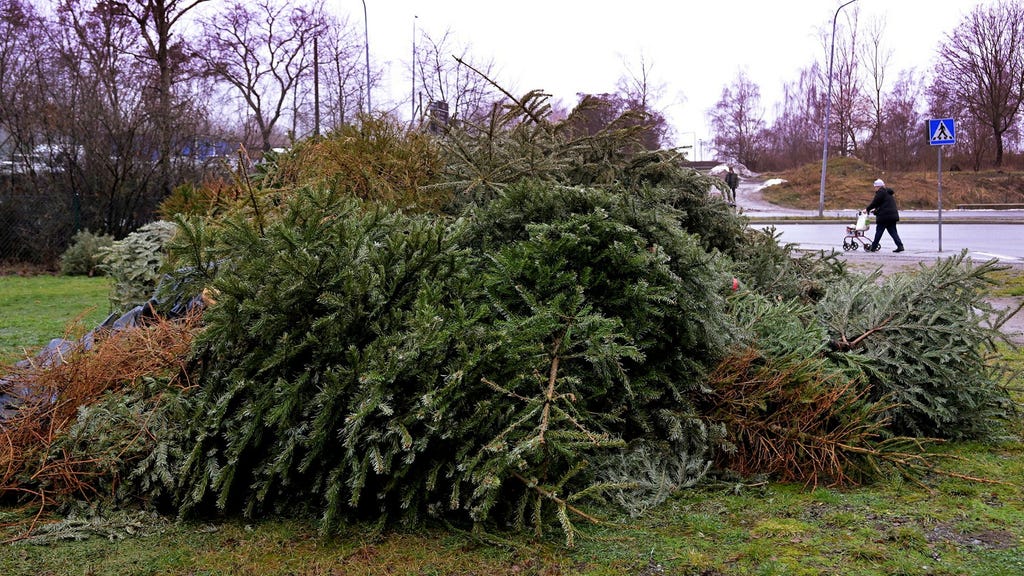The poignant tale of a Christmas tree’s journey from festive centerpiece to discarded member of a giant conifer graveyard resonates with a quiet melancholy. This particular tree, a majestic specimen of dense, deep green foliage, held a special place in the heart of the household, and not just for its aesthetic appeal. It served a dual purpose, becoming a beloved object of comfort for both human and canine residents. For the humans, it represented the spirit of the season, a symbol of warmth and joy. For Douglas, the wire-haired dachshund, it offered an unexpected source of tactile pleasure, a natural massage therapist in the form of its robust, low-hanging branches.
Douglas, experiencing the magic of Christmas for the first time, initially approached the tree with a cautious curiosity, perhaps harboring the fleeting thought of it being an indoor convenience for his usual outdoor activities. However, being a dachshund of refined tastes, he quickly discovered the true allure of this fragrant newcomer. The king fir, with its exceptionally thick needles, provided the perfect surface for a luxurious back rub. Douglas would wriggle beneath the branches, pressing his long body against the needles, emerging moments later with a blissful expression, his fur dusted with silver glitter and a few stray needles clinging to his coat. The allure of fallen ornaments and crinkling Christmas crackers paled in comparison to the soothing embrace of his arboreal masseuse.
The thought of discarding such a source of joy and comfort seemed almost sacrilegious. The tree itself appeared to thrive in its indoor environment, its lower branches spreading outwards as if in a gesture of contentment. Yet, the inevitable departure loomed. Shortly after the Epiphany, the dreaded task of dismantling the festive display began. Armed with pruning shears, the narrator began snipping off branches, creating a growing pile of greenery that immediately caught Douglas’s attention. He began nibbling at the fresh pine needles, prompting a gentle reminder that this wasn’t a Nobel Prize banquet.
Finally, the tree, stripped of its adornments and significantly reduced in size, still retained a semblance of its former glory. However, there was no turning back. With a firm grip, it was carried outside and deposited onto the growing mound of discarded Christmas trees, joining its brethren in a communal graveyard of holiday cheer. Later that evening, during their customary walk, the narrator and Douglas passed by the conifer mountain. Douglas paused, casting alternating glances at the pile of trees and then at his human companion. The unspoken message was clear: he would have preferred to keep the tree, at least until the traditional removal date of January 20th, known as ”Tjugondag Knut” in Sweden.
Back home, the absence of the tree was palpable. The space where it once stood felt empty, lacking the sparkle, the fragrance, and the unique massage therapy it provided. The festive season had come to an end, leaving behind a sense of quiet melancholy. The discarded tree, once a symbol of joy and comfort, now served as a poignant reminder of the ephemeral nature of celebrations and the bittersweet passage of time.
The story serves as a gentle reminder of the emotional connections we form, even with seemingly inanimate objects like a Christmas tree. It highlights the simple joys that often go unnoticed amidst the hustle and bustle of the holiday season – the comforting scent of pine, the sparkle of ornaments, and the unexpected pleasure of a dachshund’s back rub against its branches. The image of the discarded tree in a communal pile resonates with a sense of shared experience, a collective farewell to the festive season. The subtle humor interwoven with the narrative, like Douglas’s gourmet appreciation of pine needles, adds a touch of lightness to the underlying theme of loss and transition.














